Learning Through Choice And Sensory Experiences
Building upon the Reggio Emilia philosophy of education, the children at Blue House Nursery & International Preschool learn and grow in an environment that allows them to chart a learning path that best suits them.
On a languid school morning, children can be seen designing, building and decorating a rabbit hutch, or exploring how everyday objects can be repurposed at a Recycling Atelier. Or, perhaps, they plant seeds with their grandparents in the Community Garden, or enjoy a cello performance by a schoolmate's father while arriving at pre-school in the morning.

These are just some of the activities that children at the Blue House Nursery & International Preschool engage in on an ordinary school day. In the village-like environment of the pre-school, children from six months to six years old discover ways of learning that best suit their unique personalities.
The child-led nature of the activities is central to the Reggio Emilia approach - an educational philosophy originating from the region of Reggio Emilia, Italy. Founded by Italian teacher Loris Malaguzzi, the Reggio Emilia approach respects children as autonomous individuals who should be allowed to safely express themselves, interact with others, and learn by using all their senses and engaging in hands-on projects.
 | 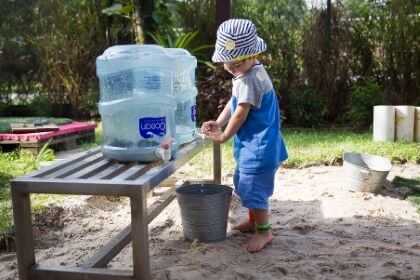 |
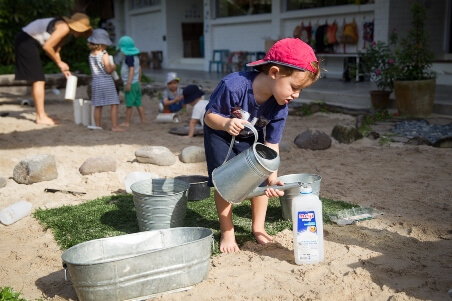 | 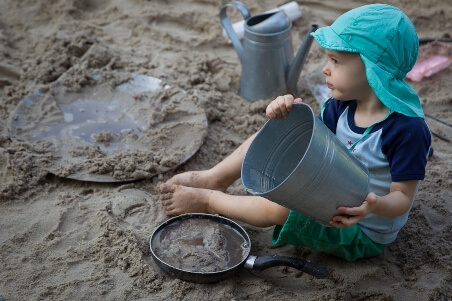 |
The curriculum at Blue House is largely unstructured and child-led. Children have the freedom to explore all available spaces, guided by what inspires them.
According to the founder of Blue House International, Shona Sanoso, it is important for children in their early years to be exposed to a wide range of experiences and activities. These experiences and activities "stimulate all parts of the brain and provide them with an opportunity to identify their particular interests," she said.
She added, "At the core of our pedagogy are open-ended experiences. We provide a huge range of materials and objects to help children tap into their natural curiosity. We allow them the freedom to choose and initiate activities based on their own level of interests. Our team of educators act as observers and facilitators to each child's unique learning journey."
 | 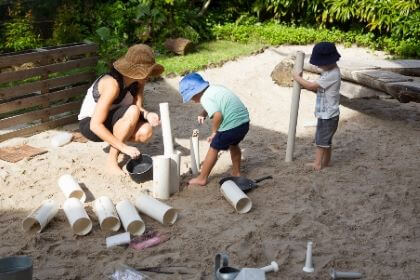 |
Blue House strongly believes that children learn best when they are interested and engaged. Early childhood teachers act as facilitators to help the children extend their learning and investigation through their topics of interest. Key learning domains such as numeracy, language and literacy are then weaved into the children's investigations.
THREE TEACHERS
While most teachers in traditional nurseries and preschools direct and instruct, teachers at Blue House - specialist educators known as "pedagogistas" - guide and facilitate instead, allowing children to discover and communicate with the world as they choose. Most pedagogistas at Blue House are not just teachers, but practising professionals in their respective fields.
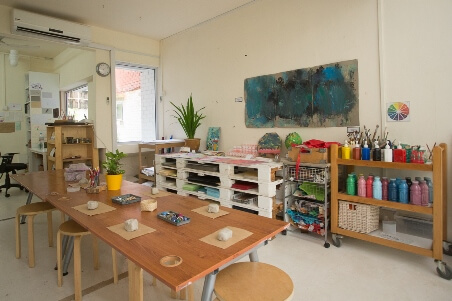 | 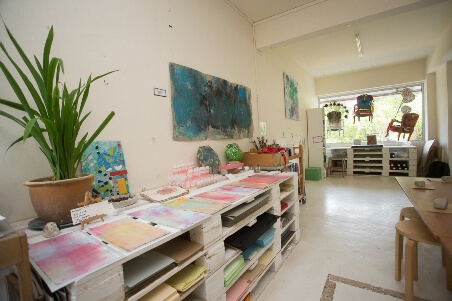 |
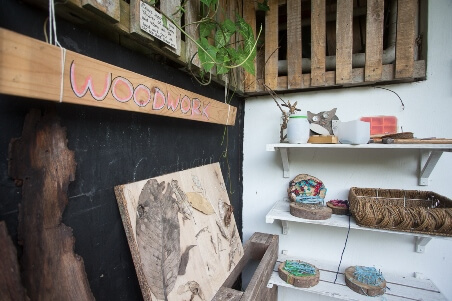 |  |
Art is an important element of Blue House. Children are provided with many opportunities for free expression. Children are exposed to different types of art, from paints to clay to charcoal and even woodwork.
Sculptor and award-winning painter Ms Stephanie Hauger and freelance designer Ms Lola Jolivet, for example. guide the children as they learn through art and design. Originally from France, Ms Jolivet and her husband have been living in Singapore since 2013, and their three children attend Blue House.
"I deeply believe that education is not the filling of a pail, but the lighting of a fire. As a teacher, I wish to observe and guide more than anything. I believe that each child should be at the centre of the learning process, and has the capacity to build their own learning experience. I believe that art and design, especially when woven into the Reggio Emilia approach, are the perfect arenas to do so as they offer so many different modes of expression," says Ms Jolivet.
The preschool's Chinese pedagogista, Ms Helen Hong, introduces the children to Mandarin through daily interaction, storytelling, sensory exploration, music and movement. "The children recognise the Mandarin words for different colours as they mix new colours to paint with. They sing and dance along to their favourite well-known songs in Mandarin too," she said.
Aside from being guided by early childhood teachers, parents, also play a key role in their children's learning by helping with projects like building the school's rabbit hutch, community table, or garden.
"Children, particularly in their early years, benefit from a collaborative effort by parents and teachers. By encouraging parents to join us in projects and share with us, children grow in confidence. They can see their learning is valued and acknowledged, and they are more willing to engage and explore. Parents also feel more connected to their child's education, and can share in the journey with their child. This leads to better communication and further enriches the learning experience," says Mrs Sanosi.
According to Sanosi, there is a "third teacher" - a stimulating and meaningful environment that influences how a child will move, how they will feel, and how they will engage and interact with adults and their peers. To this end, the pre-school plans its environment down to the smallest details, from the placement of furniture, materials use and even colour schemes and scents.
At the Recycling Atelier, recycled materials are presented in a coordinated manner to the children, so they can sort and serach for items with which to bring their creations and visions to life. Community partners such as IKEA often donate used goods, such as used palettes that can be pulled apart and re-created in the Atelier's woodwork area.
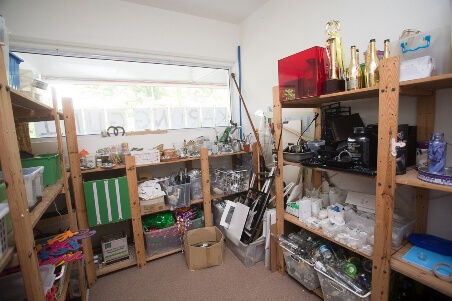 | 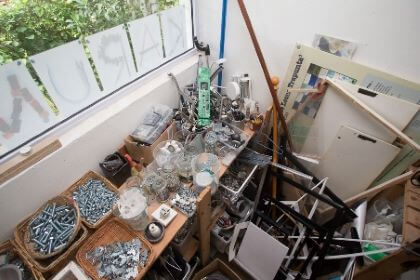 |
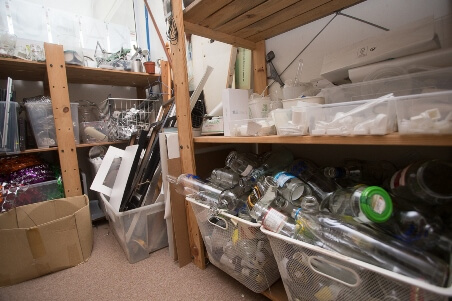 | 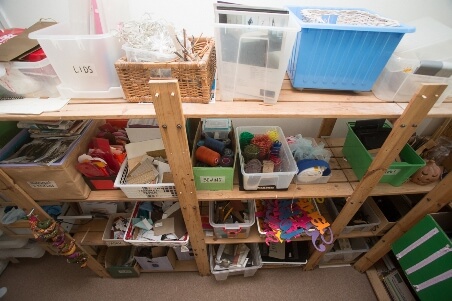 |
Blue House has a Recycling Atelier where recyclable materials donated by parents and the community are made available for children to use any time of the day.
"The use of recycled goods enriches the children's experiences in many ways. Many recycled materials are open-ended, allowing for multiple uses and creativity. Children also see everyday items being repurposed, which encourages them to challenge their findings and their knowledge, as they learn that a single item can be many things and be used in many ways. Of course, there's always an element of social responsibility, encouraging an environmentally conscious way of life," says Mrs Sanosi.
"Through the thoughtful creation of the pre-school's environment, the children are able to 'work by design', instilling their own sense of understanding and interest, and directing us to the paths they wish to follow."
DOCUMENTATION
Another important element of the Blue House approach is the documentation of the learning process, which helps teachers and parents follow and understand the child's growth and development. Children also benefit from being able to revisit and review their own work from an earlier time.
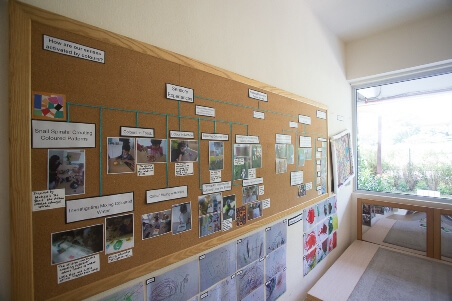
The early childhood teachers in Blue House understand the value of quality documentation. It not only helps parents to follow and understand how their child is developing but also allows the children to feel valued.
"Documentation instills a sense of pride as children can see that their experiences are valued and being appreciated within their community. It also allows teachers to share each child's learning journey with family members, which is incredibly important in the early years of childhood, when language is still developing. Together, families can experience a child's learning path, and the parents can extend upon this at home to identify ways that they can connect with their child's particular interests," says Sanosi.
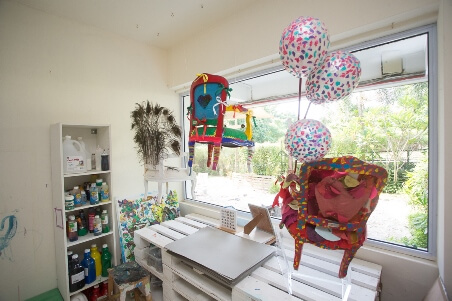 | 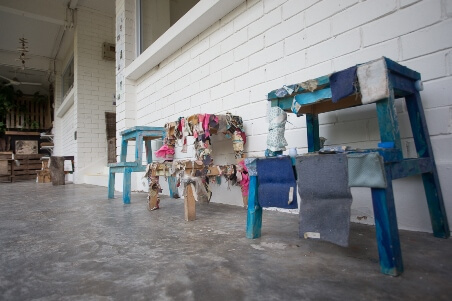 |
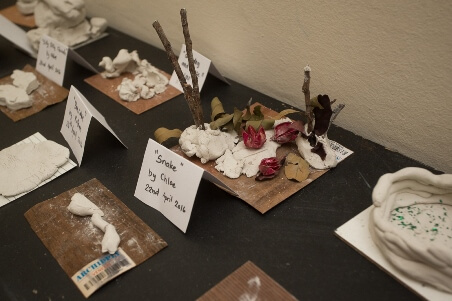 | 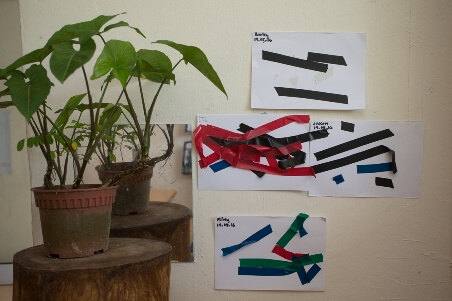 |
 | 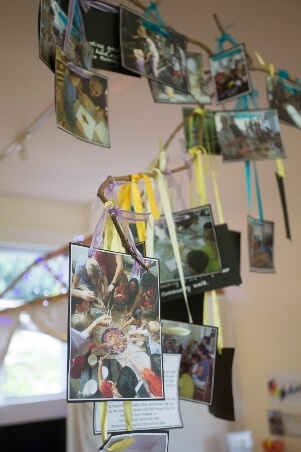 |
Every child's masterpiece is displayed in a way which help parents, teachers and the community better appreciate the children's art collectively.





